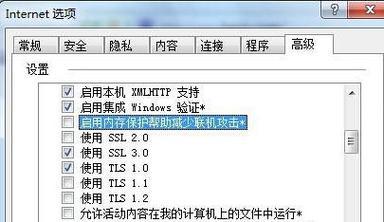
Computers are an indispensable part of modern life, and browsers are an essential tool for our daily Internet access. However, sometimes we may face a situation without a browser, resulting in no direct access to the Internet. How to deal with this situation? In order to solve this problem, PHP editor Strawberry has specially prepared this guide to provide some practical methods and tools to help you complete various tasks without a browser. This article will cover email access, file downloads, social media interactions, and more. By reading this article, you'll learn how to leverage your operating system, email client, and other tools to efficiently complete your daily tasks and communicate without a browser.

1. Use an email client to read news and articles
-Use email client software, such as Outlook, Thunderbird, etc., to subscribe to news and articles Articles are pushed to your email inbox via email.

-Open your email client to read the latest news and articles in your inbox.
2. Use instant messaging tools to obtain information
-Use instant messaging tools, such as QQ, WeChat, etc., to obtain the information you need while communicating with friends or groups.

#-Ask relevant questions to your friends and get the answers or links you need directly in the chat window.
3. Use offline reading tools to save web pages
-Download offline reading tools, such as Pocket, Evernote, etc., and save web pages of interest locally for viewing at any time.
-When you have a browser, import the saved web page into the browser and browse it.
4. Browse the web with the help of desktop applications
-Some applications, such as network disk clients, document readers, etc., provide built-in browser functions.
-Open the relevant application, you can access the web page and read the content through the built-in browser.
5. Use your mobile phone instead of the browser on your computer
-If you have a smartphone, you can use the browser on your phone to complete some simple browsing tasks.
-Send the required information to your mobile phone or search directly on your mobile phone to get the information you need.
6. Obtain e-books and materials with the help of e-book readers
-Use e-book reader software, such as Kindle, iBooks, etc., to obtain e-books and materials without a browser .
-Find and read what you need through the e-book reader software's built-in bookstore or by importing local files.
7. Use desktop search tools to find local files
-Use desktop search tools, such as Everything, Alfred, etc., to quickly find files on your local computer.
-Enter relevant keywords to find relevant documents and information to meet your needs.
8. Configure the local server to build a local web page
-Configure local server software on the computer, such as XAMPP, WampServer, etc., to build a local web page.
-Place the desired web page content on the local server and view the web page without a browser by accessing the local IP address.
9. Use command line tools to browse web pages
-In the absence of a browser, you can use command line tools, such as wget, curl, etc., to browse web pages through the command line.
-Enter the corresponding command to obtain the web page content and view it on the command line.
10. Utilize dedicated apps to access specific website content
- Some websites offer dedicated apps that allow access to specific website content without a browser.
-Download the corresponding application and browse the content of the relevant website through the application.
11. Use offline map software to find places and routes
-Download offline map software, such as Google Maps, Baidu Maps, etc., to find places and plan routes.
-With offline map software, you can easily find information about the places you want even without a browser.
12. Use RSS subscription tools to obtain information updates
-Use RSS subscription tools, such as Feedly, Inoreader, etc., to subscribe to information updates from websites that interest you.
-When new information is released, the subscription tool will provide corresponding notifications, and you can view the content through the subscription tool.
13. Use a text editor to browse the web page source code
-Use text editor software, such as Notepad++, SublimeText, etc., to open the web page source code file.
-By browsing the source code, you can understand the structure and content of the web page, and perform corresponding search and extraction.
14. Use a screen reader to obtain web content
-A screen reader is an assistive technology that converts computer content into speech or braille for use by people with visual impairments.
-If you do not have a browser but need to obtain the content of the web page, you can use a screen reader to obtain and read the content of the web page.
15. Use other computer terminals for remote access
-If you have other computer terminals available, you can remotely control browsers on other computers through remote access tools, such as TeamViewer, ChromeRemoteDesktop, etc.
-Open a browser on another computer to control your computer through remote access and browse the web.
Even without a browser, we still have many methods and tools that can help us complete various tasks. Using email clients, instant messaging tools, offline reading tools, desktop applications, etc., we can get news, read articles, and browse the web. We are also able to meet some specific needs through mobile phones, e-book readers, desktop search tools, etc. Whether utilizing a local server, command line tools, dedicated applications, or offline mapping software, we can get the information we need without a browser. At the same time, the use of screen readers, remote access, etc. can also help specific groups of people complete web browsing. Don't worry when we encounter a situation without a browser, as long as we master these methods and tools, we can still complete various tasks.
The above is the detailed content of How to cope without a browser (without a browser). For more information, please follow other related articles on the PHP Chinese website!




